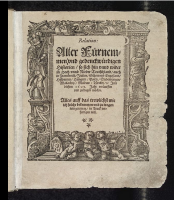








In Ancient Rome, Acta Diurna, or government announcement bulletins, were produced. They were carved in metal or stone and posted in public places.
In China, early government-produced news sheets, called tipao, circulated among court officials during the late Han dynasty (second and third centuries AD). Between 713 and 734, the Kaiyuan Za Bao (""Bulletin of the Court"") of the Chinese Tang Dynasty published government news; it was handwritten on silk and read by government officials. In 1582, there was the first reference to privately published newssheets in Beijing, during the late Ming Dynasty.
In Early modern Europe the increased cross-border interaction created a rising need for information which was met by concise handwritten newssheets, called avvisi. In 1556, the government of Venice first published the monthly Notizie scritte, which cost one gazetta, a small coin.These avvisi were handwritten newsletters and used to convey political, military, and economic news quickly and efficiently to Italian cities (1500–1700)—sharing some characteristics of newspapers though usually not considered true newspapers.
However, none of these publications fully met the classical criteria for proper newspapers, as they were typically not intended for the general public and restricted to a certain range of topics.
The term newspaper became common in the 17th century. However, in Germany, publications that we would today consider to be newspaper publications, were appearing as early as the 16th century. They were discernibly newspapers for the following reasons: they were printed, dated, appeared at regular and frequent publication intervals, and included a variety of news items. The first newspaper according to modern definitions was the Strasbourg Relation, in the early 17th century. German newspapers, like avisis, were organized by the location from which they came, and by date. They differed from avisis in because they employed a distinct and highly illustrated title page, and they applied an overall date to each issue.
The emergence of the new media branch was based on the spread of the printing press from which the publishing press derives it name.
The German-language Relation aller Fürnemmen und gedenckwürdigen Historien, printed from 1605 onwards by Johann Carolus in Strasbourg, is often recognized as the first newspaper.At the time, Strasbourg was a free imperial city in the Holy Roman Empire of the German Nation; the first newspaper of modern Germany was the Avisa, published in 1609 in Wolfenbüttel.
Other early papers include the Dutch Courante uyt Italien, Duytslandt, &c. of 1618 which was the first to appear in folio- rather than quarto-size. Amsterdam, a center of world trade, quickly became home to newspapers in many languages, often before they were published in their own country.
The first English-language newspaper, Corrant out of Italy, Germany, etc., was published in Amsterdam in 1620. A year and a half later, Corante, or weekely newes from Italy, Germany, Hungary, Poland, Bohemia, France and the Low Countreys. was published in England by an "N.B." (generally thought to be either Nathaniel Butter or Nicholas Bourne) and Thomas Archer.
The first newspaper in France was published in 1631, La Gazette (originally published as Gazette de France).
The first newspaper in Portugal, A Gazeta da Restauração, was published in 1641 in Lisbon. The first Spanish newspaper, Gaceta de Madrid, was published in 1661.
Post- och Inrikes Tidningar (founded as Ordinari Post Tijdender) was first published in Sweden in 1645, and is the oldest newspaper still in existence, though it now publishes solely online.
Opregte Haarlemsche Courant from Haarlem, the Netherlands, first published in 1656, is the oldest paper still printed. It was forced to merge with the newspaper Haarlems Dagblad in 1942 when Germany occupied the Netherlands. Since then the Haarlems Dagblad appears with the subtitle Oprechte Haerlemse Courant 1656 and considers itself to be the oldest newspaper still publishing.
Merkuriusz Polski Ordynaryjny was published in Kraków, Poland in 1661.
The first successful English daily, The Daily Courant, was published from 1702 to 1735.
News was highly selective and often propagandistic. Readers were eager for sensationalism, such as accounts of magic, public executions and disasters; this material did not pose a threat to the state, because it did not pose criticism of the state.